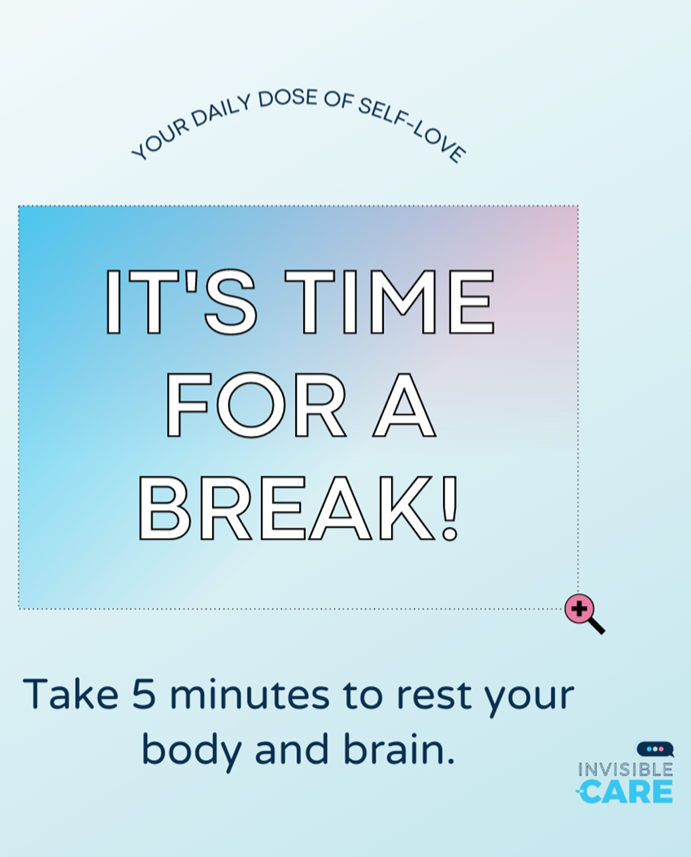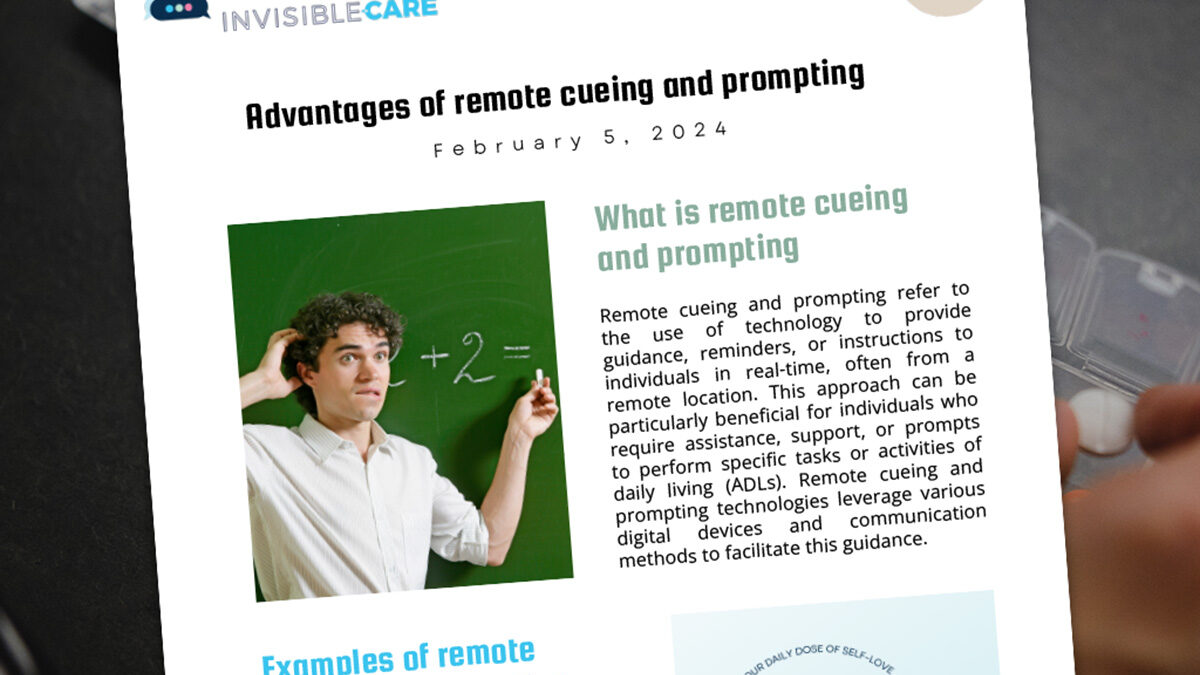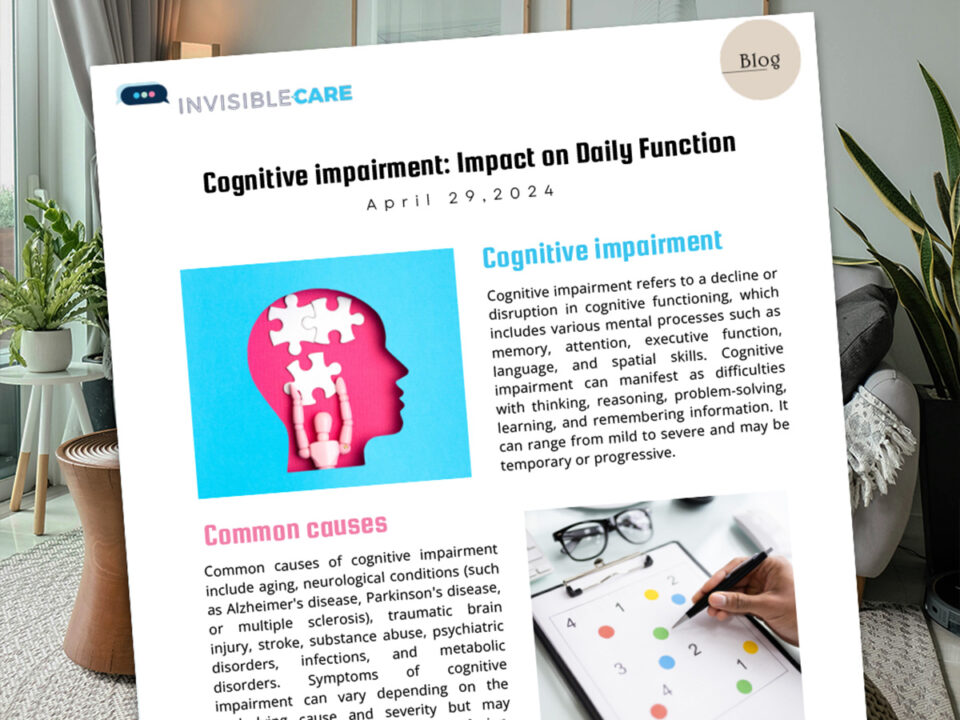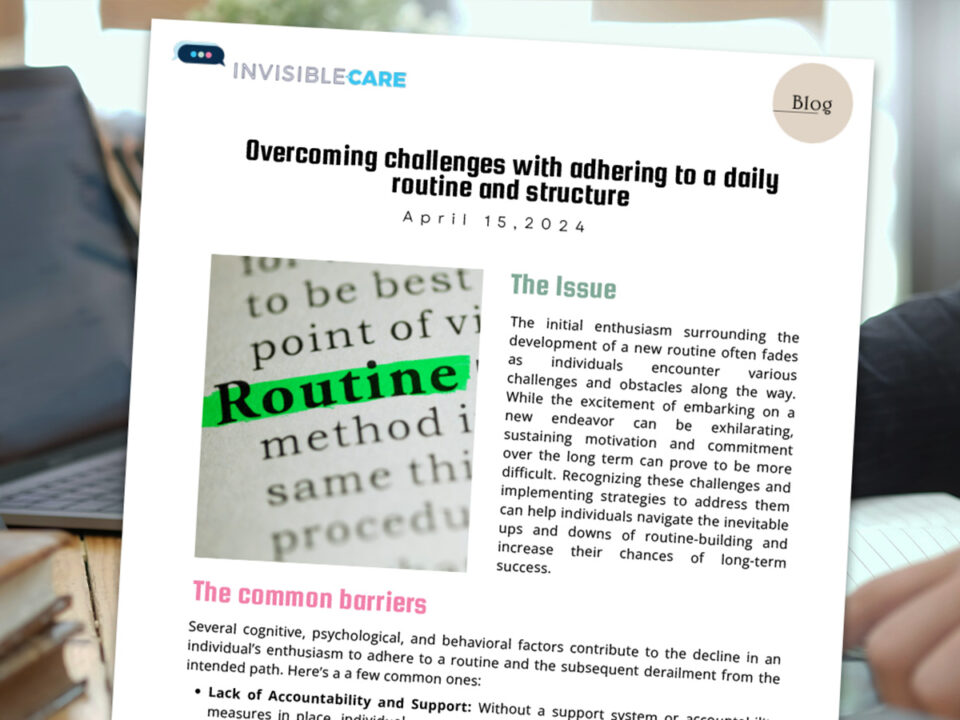
Benefits of Leveraging Technology to Deliver Remote Care
January 22, 2024
Remote Solutions for Homecare Challenges
February 19, 2024
What is Remote Cueing and Prompting
Remote cueing and prompting refer to the use of technology to provide guidance, reminders, or instructions to individuals in real-time, often from a remote location. This approach can be particularly beneficial for individuals who require assistance, support, or prompts to perform specific tasks or activities of daily living (ADLs). Remote cueing and prompting technologies leverage various digital devices and communication methods to facilitate this guidance.
Examples of Remote Cueing and Prompting
- A person with dementia receiving reminders to take their medication or engage in daily exercises through a mobile app.
- An individual with a mobility impairment receiving instructions on how to perform specific tasks using a wearable device that provides haptic feedback.
- A caregiver remotely supervising and guiding an older adult with mobility challenges as they prepare meals using a tablet or smartphone.


Benefits of Remote Cueing and Prompting
- Independence and Autonomy: Remote cueing and prompting systems can assist individuals in performing tasks independently, enhancing their sense of autonomy and self-confidence. This can be particularly empowering for individuals who are relearning skills or adapting to new ways of doing things.
- Improved Task Completion: Cueing and prompting can help individuals remember and sequence steps needed to complete tasks, such as getting ready in the morning, preparing meals, or taking medications. This can lead to increased task completion and reduced frustration.
- Cognitive Support: For brain-injured individuals with cognitive impairments, remote systems can provide cues and reminders that support memory, attention, and problem-solving. These cues can help individuals stay organized and focused on their daily activities.
- Rehabilitation and Skill Retraining: Remote cueing and prompting can be integrated into rehabilitation programs to help individuals practice and reinforce skills they are relearning. This continuous practice can contribute to skill retention and improvement. Safety and
- Risk Mitigation: Cueing and prompting systems can provide reminders for important safety measures, such as locking doors, turning off appliances, or using mobility aids. This helps mitigate risks and promote a safe living environment.
- Communication Support: Some remote cueing systems include communication features that allow caregivers, family members, or therapists to communicate with brain-injured individuals. This can facilitate social interaction and provide emotional support.
- Flexibility and Customization: Remote cueing and prompting systems can be tailored to each individual’s unique needs and preferences. The prompts can be personalized based on the individual’s goals and challenges.

More Benefits of Remote Cueing and Prompting
- Reduced Caregiver Burden: Remote systems can alleviate some of the caregiving responsibilities placed on family members and caregivers. Individuals can receive prompts without constant physical presence, allowing caregivers to manage their own tasks and responsibilities.
- Community Integration: Remote cueing and prompting can enable individuals to engage in community activities and outings with greater confidence. They can receive reminders for appointments, events, and public transportation schedules.
- Transition to Independent Living: For brain-injured individuals transitioning to more independent living arrangements, remote cueing and prompting can provide a bridge of support during this transition period.
- Enhanced Quality of Life: Ultimately, remote cueing and prompting contribute to an improved quality of life for brain-injured individuals. By helping them overcome challenges and achieve greater independence, these systems enable individuals to participate more fully in daily activities and pursue their interests.
Considerations for Care Planning
It’s important to select the appropriate remote cueing and prompting technology based on the individual’s needs and capabilities. Additionally, involving healthcare professionals, therapists, and caregivers in the implementation and customization of these systems can maximize their benefits for brain-injured individuals of all ages.





